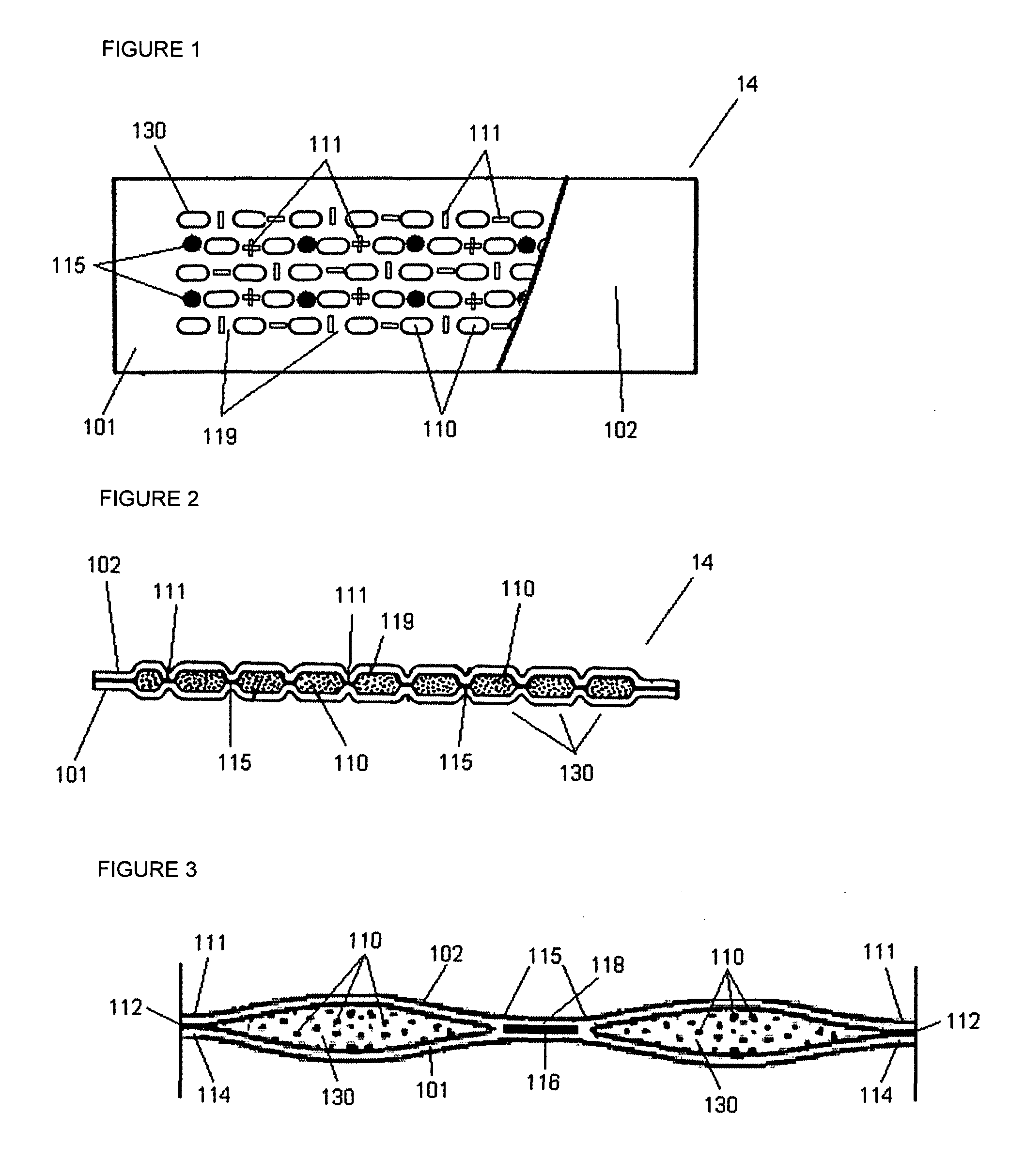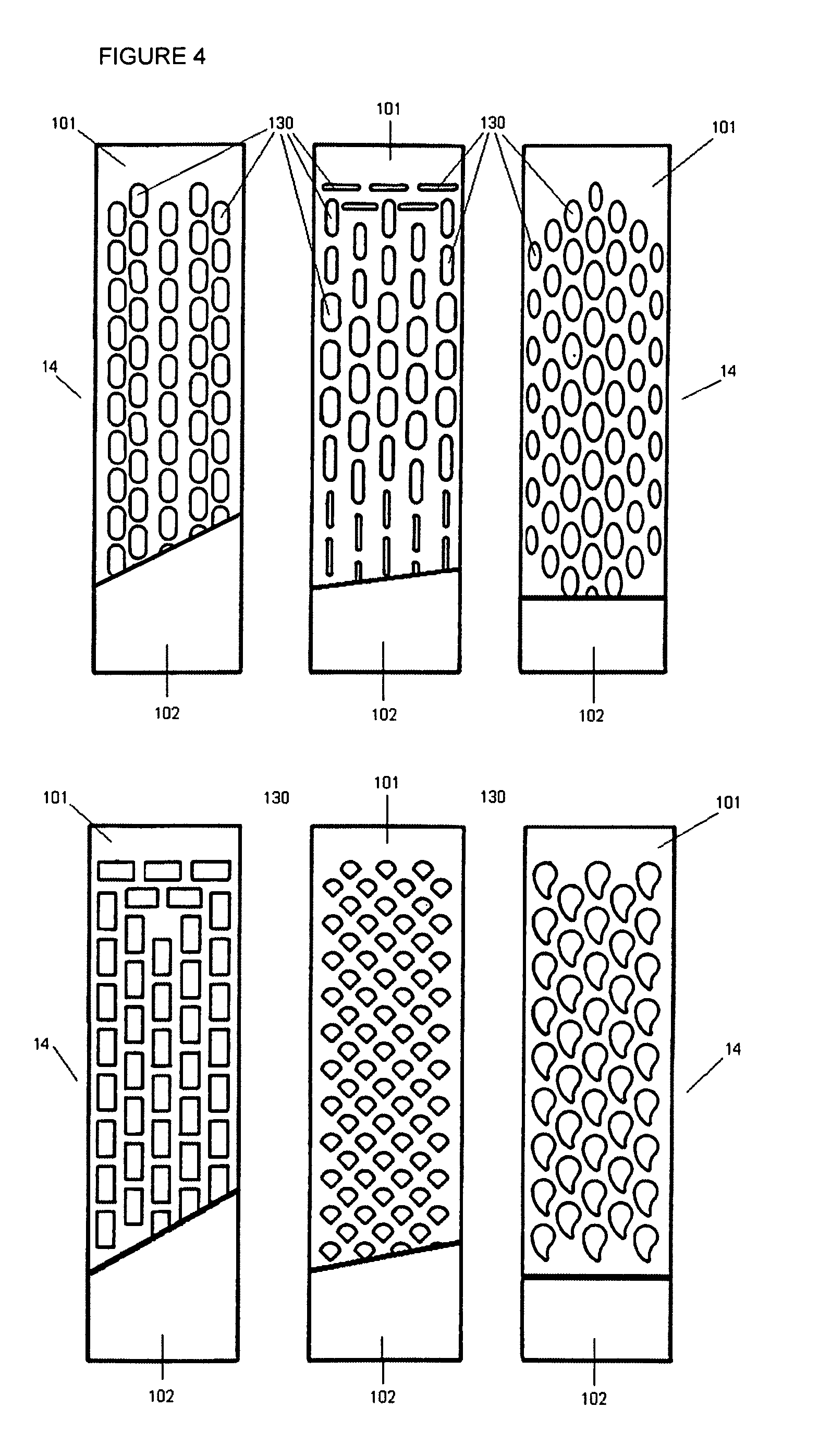Environmentally friendly absorbent structure
a technology of absorbent structure and absorbent material, applied in the field of environmental protection, can solve the problems of reduced absorption, distribution and/or retention performance despite functional and/or structural, loss of functional performance such as absorbent structure coherence, absorption and/or retention performance, and partial or overall failure, so as to increase the expansion and swelling of absorbent material, increase the overall absorbency and retention capacity, and increase the efficiency and effectiveness of raw materials
- Summary
- Abstract
- Description
- Claims
- Application Information
AI Technical Summary
Benefits of technology
Problems solved by technology
Method used
Image
Examples
Embodiment Construction
[0069]The present invention concerns an absorbent structure for use in an absorbent product, preferably an absorbent article from the personal hygiene industry, such as feminine hygiene garments, baby diapers and pants and adult incontinence garments; and to a method and manufacturing of the same.
[0070]Unless otherwise defined, all terms used in disclosing the invention, including technical and scientific terms, have the meaning as commonly understood by one of ordinary skill in the art to which this invention belongs. By means of further guidance, term definitions are included to better appreciate the teaching of the present invention.
[0071]As used herein, the following terms have the following meanings:
[0072]“A”, “an”, and “the” as used herein refers to both singular and plural referents unless the context clearly dictates otherwise. By way of example, “a compartment” refers to one or more than one compartment.
[0073]“About” as used herein referring to a measurable value such as a ...
PUM
| Property | Measurement | Unit |
|---|---|---|
| distance | aaaaa | aaaaa |
| area | aaaaa | aaaaa |
| diameters | aaaaa | aaaaa |
Abstract
Description
Claims
Application Information
 Login to View More
Login to View More - R&D
- Intellectual Property
- Life Sciences
- Materials
- Tech Scout
- Unparalleled Data Quality
- Higher Quality Content
- 60% Fewer Hallucinations
Browse by: Latest US Patents, China's latest patents, Technical Efficacy Thesaurus, Application Domain, Technology Topic, Popular Technical Reports.
© 2025 PatSnap. All rights reserved.Legal|Privacy policy|Modern Slavery Act Transparency Statement|Sitemap|About US| Contact US: help@patsnap.com



